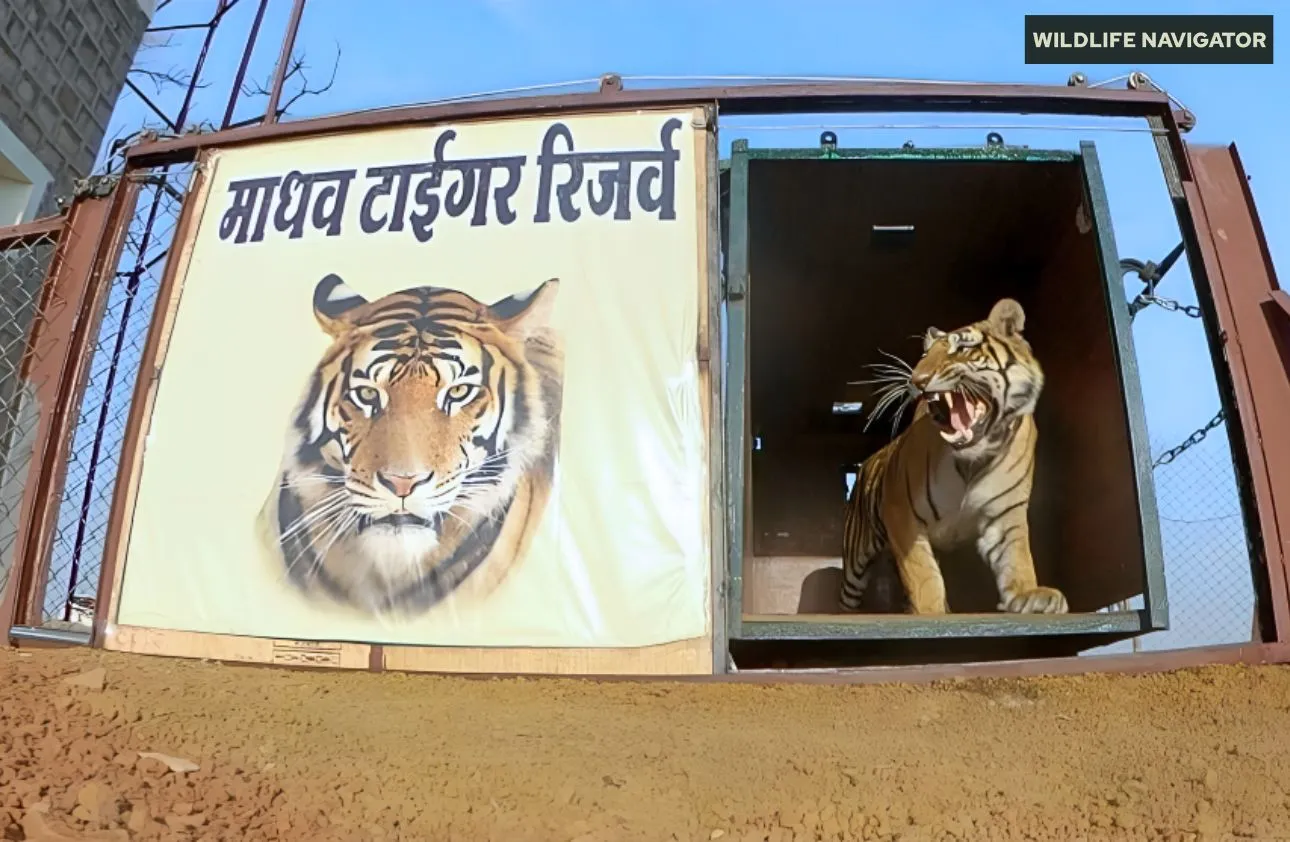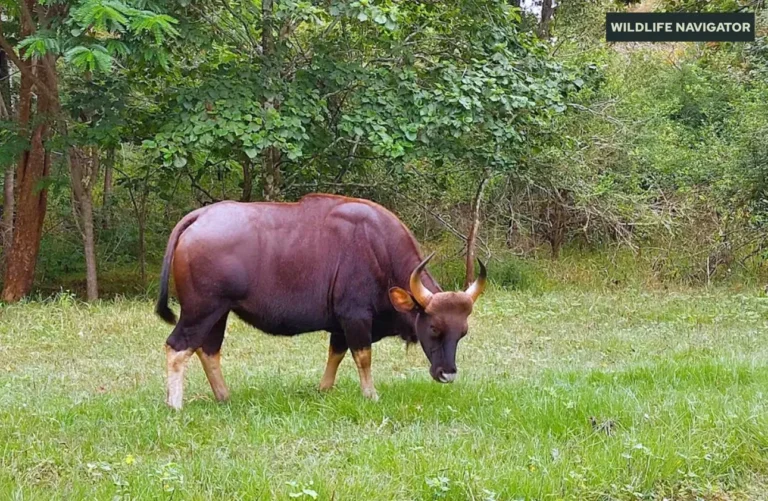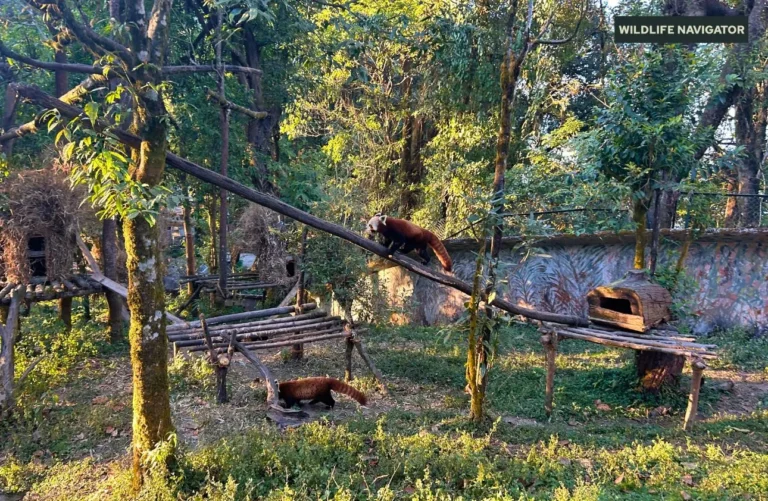Madhav Tiger Reserve: Exploring India’s 58th Tiger Reserve in Madhya Pradesh

Madhav Tiger Reserve, India’s 58th tiger reserve, is a newly declared haven for one of the country’s most iconic predators. Located in the Shivpuri district of Madhya Pradesh, it marks the state’s 9th tiger reserve, officially recognised on 9 March 2025. Before its designation as a tiger reserve, the area was known as Madhav National Park, a name still familiar to many wildlife enthusiasts and travellers.
Spread over lush forests, rolling grasslands, and several serene lakes, Madhav Tiger Reserve is more than just a sanctuary for tigers. Its diverse landscapes support a wide variety of wildlife, including leopards, sambar deer, wild boars, and numerous bird species. The reserve is also an important ecological corridor, connecting tiger populations across central India and contributing significantly to tiger conservation efforts under Project Tiger.
For travellers and wildlife photographers, the reserve offers an immersive experience amidst nature, from spotting elusive tigers to enjoying tranquil lakeside views and rich flora. Its historical significance, combined with its natural beauty, makes Madhav Tiger Reserve a must-visit destination for anyone interested in India’s wildlife heritage.
Geography & Location
Madhav Tiger Reserve is situated in the Shivpuri district of Madhya Pradesh, covering an area of approximately 354 square kilometres, including forested zones, grasslands, and wetland ecosystems. The reserve lies in the northwestern part of the state and forms an important part of central India’s ecological landscape. Its terrain is a mix of dry deciduous forests, small hills, and open grasslands, creating diverse habitats for tigers, herbivores, and bird species.
The reserve is easily accessible from major cities. Gwalior, located about 80 kilometres away, serves as the nearest railway and airport hub, while Shivpuri town, just 15–20 kilometres from the reserve, is the closest urban settlement. Well-connected roads make it feasible for visitors to plan day trips or extended wildlife stays. Several lakes within the reserve, including the Madhav Sagar, add to the scenic beauty and provide water sources for the wildlife, making it ideal for spotting tigers and other animals.
Madhav Tiger Reserve’s location also places it in proximity to other protected areas in Madhya Pradesh, forming a crucial corridor for wildlife movement and biodiversity conservation in central India. Its strategic location ensures both ecological significance and visitor accessibility, making it an attractive destination for eco-tourism.
History & Conservation Status
Madhav Tiger Reserve has a rich history rooted in wildlife conservation. Originally established as Madhav National Park in 1959, it was named after Madhav Rao Scindia, the former ruler of Gwalior. The park was initially created to protect the region’s forests, lakes, and wildlife, including herbivores such as sambar, chital, and nilgai, along with predators like leopards.
Over the decades, Madhav National Park gained recognition for its ecological importance, especially as a habitat for tigers. Recognising the need for stronger protection measures and to boost tiger conservation under Project Tiger, the government of Madhya Pradesh officially declared it a tiger reserve in March 2025, making it the state’s 9th tiger reserve and the 58th in India. This new status has brought increased conservation focus, funding, and stricter regulations to preserve critical habitats and wildlife corridors.
The transition from a national park to a tiger reserve has strengthened anti-poaching efforts, habitat management, and monitoring of tiger populations. Today, Madhav Tiger Reserve stands as a symbol of India’s ongoing commitment to safeguarding tigers and maintaining the ecological balance of central India. It not only protects endangered species but also plays a vital role in research, eco-tourism, and environmental education.
Flora
Madhav Tiger Reserve boasts a rich variety of plant life, which forms the backbone of its diverse ecosystem. The reserve primarily consists of dry deciduous forests, interspersed with grasslands and wetland areas, providing essential habitats and food sources for its wildlife. The vegetation here supports tigers, herbivores, and a multitude of bird species.
Key vegetation types include:
- Dry deciduous forests: Dominated by trees such as teak, dhok, tendu, and mahua.
- Grasslands: Provide grazing grounds for herbivores like sambar, chital, and nilgai.
- Wetlands and lakesides: Home to aquatic plants and reeds, crucial for migratory birds.
Notable plant species in Madhav Tiger Reserve:
- Teak (Tectona grandis) – Valuable timber and dominant in forested areas.
- Mahua (Madhuca longifolia) – Known for its flowers and traditional uses by local communities.
- Dhok (Anogeissus latifolia) – Provides shade and fodder for wildlife.
- Tendu (Diospyros melanoxylon) – Leaves used traditionally for rolling tobacco.
- Various shrubs and grasses – Essential for herbivore diet and soil conservation.
The diverse flora not only supports the wildlife but also contributes to the ecological balance of the region. Seasonal variations bring different blooms and greenery, making the reserve visually stunning throughout the year.
Fauna
Madhav Tiger Reserve is a biodiversity hotspot, supporting a wide array of wildlife. Its forests, grasslands, and wetlands create ideal habitats for tigers, herbivores, and numerous bird and reptile species.
Key mammals in the reserve:
- Tiger – The flagship species and the main focus of conservation efforts.
- Leopard – Elusive and primarily nocturnal predators.
- Sambar Deer – Large herbivores often seen grazing in grasslands.
- Chital (Spotted Deer) – Commonly found in herds throughout the reserve.
- Nilgai – Asia’s largest antelope, frequently spotted in open areas.
- Wild Boar – Scavengers that play an important role in the ecosystem.
- Jackal – Small predators that help control rodent populations.
Birds of Madhav Tiger Reserve:
- Peafowl (Indian Peacock) – The national bird of India, commonly seen.
- Kingfisher and Storks – Found near lakes and wetlands.
- Parakeets, Hornbills, and Bulbuls – Thrive in forested areas.
- Migratory waterbirds – Visit during the winter months.
Reptiles:
- Monitor Lizards – Often spotted near water bodies.
- Indian Python – Non-venomous constrictor.
- Common snakes – including krait, cobra, and rat snakes.
The reserve’s fauna reflects a well-balanced ecosystem, where predators, herbivores, and birds coexist. Tigers, being at the top of the food chain, indicate a healthy environment, while the presence of migratory birds and reptiles showcases the diversity of habitats within the reserve.
Best Time to Visit
The experience of visiting Madhav Tiger Reserve depends heavily on the season, as wildlife sightings and the weather vary throughout the year.
Recommended visiting seasons:
- Winter (October to March):
- The best time for wildlife spotting, including tigers, leopards, and deer.
- Pleasant weather, ranging from 10°C to 25°C, makes safaris comfortable.
- Migratory birds are often seen near lakes and wetlands.
- Summer (April to June):
- Temperatures can rise above 40°C, making it hot during the day.
- Early mornings and late evenings are ideal for safaris.
- Water sources may dry up, causing wildlife to congregate near lakes.
- Monsoon (July to September):
- The forest is lush and green, offering scenic views and excellent photography opportunities.
- Some areas may be inaccessible due to heavy rains, so check local conditions.
By choosing the right season, visitors can maximise their chances of witnessing the reserve’s rich biodiversity while enjoying its natural beauty comfortably.
Activities & Attractions
Madhav Tiger Reserve offers a variety of activities for wildlife enthusiasts, nature lovers, and eco-tourists. Its combination of forests, grasslands, and lakes provides both adventure and relaxation opportunities.
Popular activities:
- Wildlife Safari:
- Jeep safaris are the best way to spot tigers, leopards, and herbivores.
- Guided tours with trained naturalists enhance wildlife spotting and provide insights into animal behaviour.
- Birdwatching:
- Ideal for spotting peafowl, migratory waterbirds, hornbills, and kingfishers.
- Early mornings and evenings are perfect for photography and observation.
- Trekking & Nature Walks:
- Several marked trails allow visitors to explore forests and grasslands on foot.
- Nature walks help visitors learn about flora, fauna, and the ecological significance of the reserve.
- Lakes and Waterbodies:
- Madhav Sagar and other smaller lakes are scenic spots for wildlife observation.
- Waterbodies attract birds and grazing animals, making them ideal for photography.
- Photography & Eco-Tourism:
- The diverse landscapes, wildlife, and seasonal blooms provide ample opportunities for photography.
- Responsible eco-tourism initiatives encourage minimal impact on the environment.
Visitors can choose from short trips, day visits, or extended stays to fully explore the natural beauty and biodiversity of Madhav Tiger Reserve.
Accommodation near Madhav Tiger Reserve
Visitors to Madhav Tiger Reserve have several options, ranging from eco-lodges inside the park to hotels and resorts in nearby towns. Choosing the right stay can enhance your wildlife experience.
Inside the Reserve / Eco-Lodges
Staying inside or near the reserve allows you to start safaris early and enjoy a more immersive nature experience. Options include:
- Forest Rest Houses:
- Managed by the Madhya Pradesh Forest Department.
- Basic facilities include clean rooms, beds, attached bathrooms, and sometimes dining services.
- Booking is usually required in advance through the forest department.
- Eco-Lodges / Nature Camps:
- Offer tents or cottages amid the forest for a rustic experience.
- Often include guided nature walks, local cuisine, and opportunities for birdwatching.
- Ideal for photographers and nature enthusiasts wanting to stay close to wildlife.
Shivpuri Town (15–20 km from the Reserve)
Shivpuri is the closest town for visitors seeking budget or mid-range options:
- Guesthouses and Budget Hotels:
- Comfortable rooms with basic amenities like Wi-Fi, meals, and parking.
- Convenient for day trips into the reserve without staying inside the park.
- Homestays / Local Stays:
- Experience local culture, cuisine, and hospitality.
- Often offer personalised guidance on safaris and sightseeing.
Gwalior (Approx. 80 km away)
Gwalior is suitable for travellers who prefer luxury or want city conveniences while visiting Madhav Tiger Reserve:
- Luxury Hotels & Resorts:
- Full-service hotels with AC rooms, swimming pools, restaurants, and travel assistance.
- Great for longer stays or combining a visit to the reserve with sightseeing in Gwalior.
- Mid-range Hotels:
- Comfortable rooms at affordable rates, often with included breakfast.
- Suitable for families or groups planning day trips to the reserve.
Tips for Visitors
Visiting Madhav Tiger Reserve requires some preparation to ensure a safe, enjoyable, and responsible experience.
General Tips:
- Permits: Visitors need entry permits for safaris, which can usually be booked online or at the park office.
- Guides: Hiring trained naturalists or guides is recommended for better wildlife spotting and safety.
- Clothing: Wear neutral-colored clothing to blend into the environment; avoid bright colours that may startle wildlife.
- Photography: Early mornings and late afternoons offer the best lighting and increased chances of wildlife sightings.
- Safety: Follow all park rules, maintain a safe distance from animals, and avoid littering.
- Tips for Booking Accommodation:
- Book early, especially during peak wildlife season (October to March).
- Staying closer to the reserve allows early morning safaris, which are best for tiger sightings.
- Check for guided tour packages that include accommodation, safari, and meals for a hassle-free experience.
Conclusion
Madhav Tiger Reserve stands as a shining example of India’s commitment to wildlife conservation. As the 58th tiger reserve in the country and 9th in Madhya Pradesh, it plays a vital role in protecting tigers, preserving biodiversity, and maintaining ecological balance. From its rich forests and grasslands to its serene lakes, the reserve offers a unique opportunity to experience the beauty and diversity of central India’s wildlife.
Whether you are a wildlife enthusiast, a photographer, or a nature lover, Madhav Tiger Reserve provides unforgettable experiences—from spotting elusive tigers to observing migratory birds and exploring lush landscapes. Its transformation from Madhav National Park to a tiger reserve underscores the importance of continuous conservation efforts and eco-tourism that respects the environment.
A visit to Madhav Tiger Reserve is not just a journey into the wild; it is a step towards supporting India’s tiger conservation mission and appreciating the delicate balance of nature. Responsible tourism here ensures that future generations can also witness the magic of this incredible habitat.





